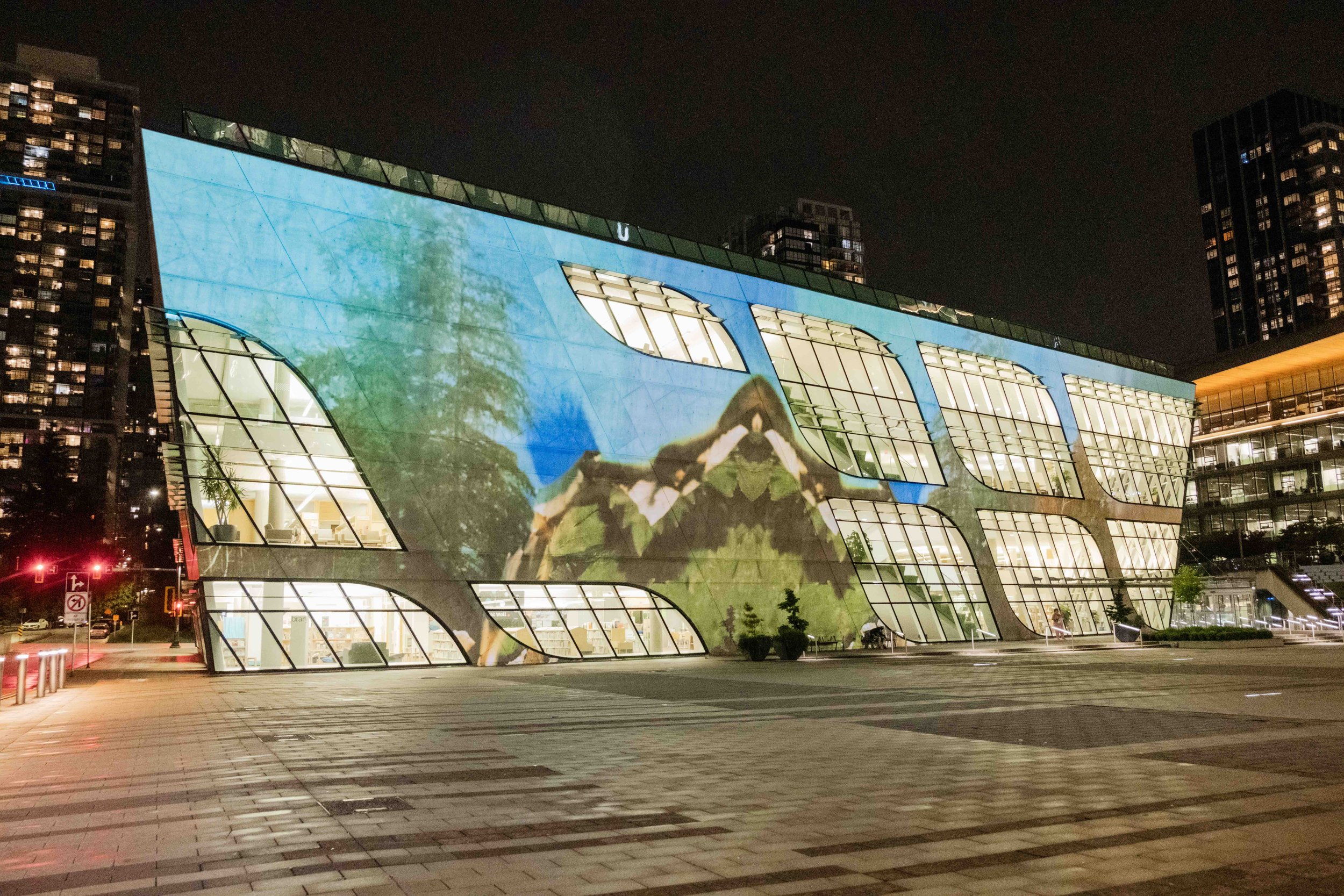While they were sleeping: here are some of the billboard images that the Capture Photography Festival had to cover up
Steven Shearer’s photos, drawn from his massive archives, unsettle by design
A person caught sleeping in Steven Shearer’s Untitled, and now removed, project.
Photo by Kim Spencer-Nairn, via @capturephotofest
WHEN WE SLEEP, we are at our most vulnerable.
Is that what made Vancouverites who complained about Steven Shearer’s billboard installation along the Arbutus Corridor as part of the Capture Photography Festival so uncomfortable? Or were the images just too creepily close to faces of death?
You be the judge, as we’ve posted images here of the works, which were originally slated to run until May 21, 2021.
Photo by Kim Spencer-Nairn, via @capturephotofest
Untitled, the series provoked such a strong public reaction from passersby that the project was removed by sponsors Pattison Outdoor Advertising yesterday, working with Capture.
The shots are part of a much larger campaign of billboard-size exhibitions running throughout the city during the fest, which kicked off today and continues until the end of the month.
First, a little bit about the acclaimed artist behind the controversial project: Shearer is one of Vancouver’s most well-known photo artists, working across a range of photography, painting, and collage, and showing everywhere from the Tate Modern to the Art Gallery of Ontario. In 2004-05, our own Contemporary Art Gallery was the site of one solo retrospective, its most indelible centrepiece a sculptural installation that looked like a steel garden shed; it reverberated as a P/A system played a heavy metal guitar solo inside it. Shearer’s subject is often youth culture and the brutal alienation, anxiety, and angst of adolescence.
He frequently draws from a gigantic archive of photographs—reportedly 63,000 and counting—mostly downloaded from the web. Its images include amateur record and tape collections, guitars, and more. He has produced a number of works anthologizing images of ‘70s teen pop idols like the blond and baby-faced Shawn Cassidy and Leif Garrett. Artforum famously called him the “bastard offspring of the Photo-conceptualists”—and meant that in a very good way.
Photo by Kim Spencer-Nairn, via @capturephotofest
At a 2016 retrospective at the Brant Foundation Art Study Center in Greenwich and then in 2017 at the National Gallery of Canada, Sleep II appeared as a triptych made up of culled images similar to the ones in this project. In it, Shearer amassed thousands of found images of people sleeping—babies stretched out, youths with their mouths hanging open, young women blissfully lost in slumber—and painstakingly brought them together into a wall-filling composition.
Now, about the untitled series at Capture: here, again, Shearer draws from appropriated imagery, in this case photos of reclined and sleeping figures—not deceased ones, as some residents seem to have assumed. Note that they are young. The images allude to those found in religious paintings and sculptures, where, as Capture puts it, “bodies appear to be in states of ecstasy or as if defying gravity, released from their earthly bonds. By featuring people asleep, typically a private act, the billboards purposefully provoke questions around the private vs. the public.”
Yes, indeed—more questions that anyone probably could have predicted. In a statement released via Instagram yesterday, Capture explained: “The early removal of this project has raised questions for us about what is relevant and appropriate work in the public realm, how we can offer meaningful dialogue around this work, and how to balance community concerns with exhibiting critical, provocative projects.”
And here’s where we get to why the images are so unsettling. It’s important to acknowledge they’re not just capturing incredibly private moments, but they’re drawn from the interweb and then blown up to the size of billboards. Cleverly, Shearer’s images of sleeping people are actually a kind of wakeup call—about who’s watching us and where, in a world where lives are lived online.
Note that they’re also placed along a West Side cycling and walking corridor—not, say, downtown.
In Capture’s catalogue, the team roots out the reason the images cause us unease—which is entirely, of course, intentional: “By virtue of giving way to their physical desire for sleep, the figures have unintentionally invited passersby to observe them at a heightened level of vulnerability and intimacy. In mining the internet and eBay—the most public of forums—for images of private moments and again making them public, Shearer offers a subversive and poignant commentary on the ways in which so many banal moments of our lives in contemporary society are made accessible for public consumption.”
And so our discomfort may speak to our own insecurities—a little bit like our instinct to cover up when too much is exposed. Like getting caught nodding off. Have a look, and you be the judge.
Steven Shearer’s Sleep II, inkjet on canvas.



















